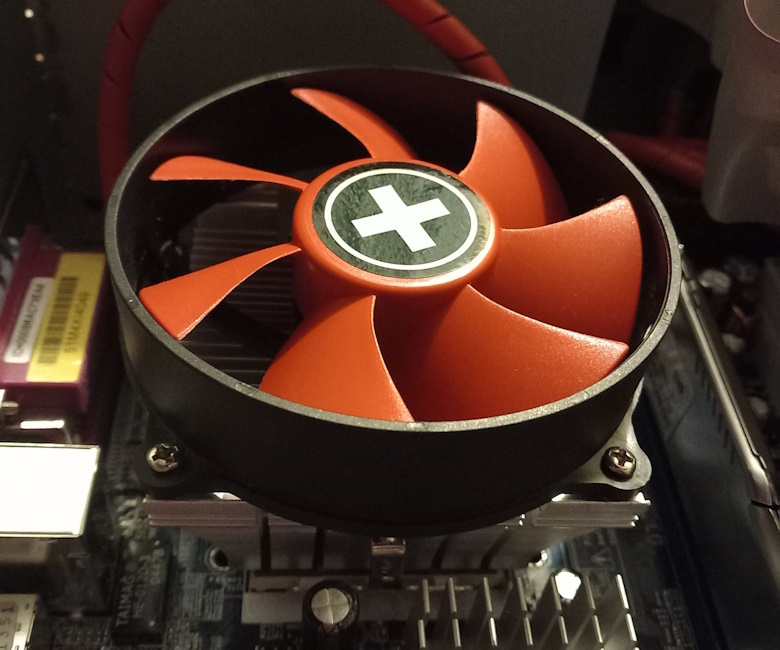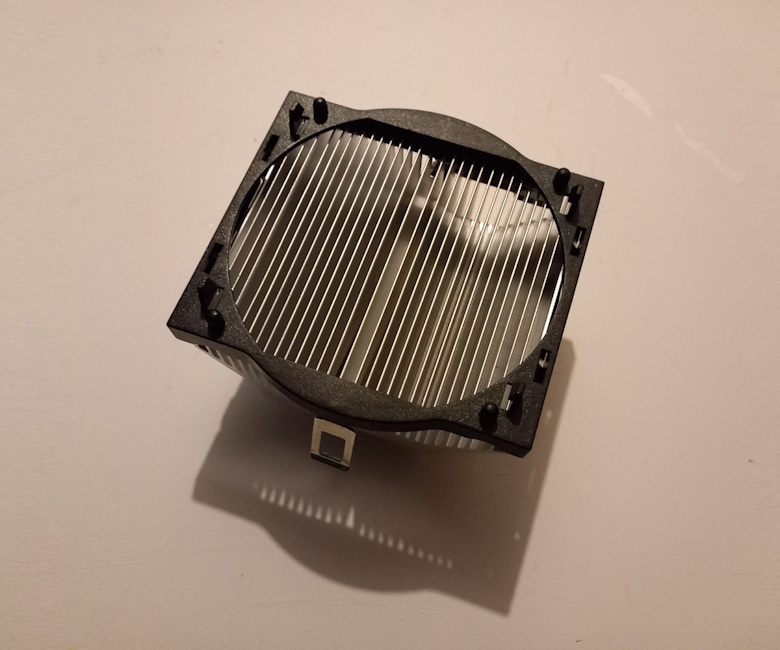Ray_NN wrote on 2024-02-20, 18:20:My retro PC has a socket 462/A CPU, the cooler is very loud
That's most likely because the original 80 mm fan is running at full speed (12V)
Of course, the new FM2 fan may be (and likely will be) more quiet when running on the same 12V, since it is bigger in diameter and probably runs at lower RPM too.
What I would be more concerned about is the long-term reliability of this fan swap.
Note that the original 80 mm fan is ball-bearing type (it says so on the label, at least.) These type of fans tend to be more reliable, particularly when ran at their maximum speed (full 12V from CPU header.) In contrast, the FM2 fan may not last anywhere near as long if it's a sleeve bearing fan and not meant to be powered from full 12V from the CPU header constantly... especially if it's a 4-pin PWM fan.
So I would advise to use caution if deciding to go with the FM2 fan, unless you use it with a fan speed controller. But then if you do, that could further reduce its speed, which will in effect further reduce the airflow going to the heatsink. And then you may end up with a situation where the CPU is not being cooled properly.
Ray_NN wrote on 2024-02-20, 18:20:As you can see, because the new fan is not squared, there is a gap around the sides of the heatsink, does this matter?
It will matter a little. Most of the airflow from a fan is towards the outer edges of the fan blades / the sides of the casing. As such, most of the air from the fan will likely slip past the heatsink and not much will go through it. Of course, depending on the CPU that you have under (particularly its TDP rating), this may or may not be an issue - i.e. if the CPU has low TDP, the heatsink may not need that much air flowing through it to keep the CPU cool, so the new fan might be just up to the task. However, if the CPU is a higher-end chip with TDP of 55+ Watts, your new fan might not actually be able to provide the airflow needed to keep the CPU cool... or rather it will provide the airflow, but since the air won't be directed to pass through the heatsink fins, the heatsink won't be able to remove heat as effectively as it would with the old fan.
So in short, you would have to test this and monitor your CPU temperatures carefully.
If you are handy, one thing you can do is you can make your own "adapter" to go from the width of the new fan to the width of the heatsink, sort of like a funnel. I've done this many times in the past when fitting larger (80 mm) fans onto much smaller (stock socket 370) coolers in order to get rid of the loud 5k RPM screamer fans that those coolers came with while still getting the same cooling capacity.
Ray_NN wrote on 2024-02-20, 18:20:Separate question,
The case I have built the retro PC in does not have a rear fan, does that matter on older Athlon machines?
I like the case but it's a Packard Bell case and is strong and heavy so don't fancy having to drill a big hole into the back for a fan.
Depends on the TDP of the Athlon CPU (and also the GPU.) If you have a relatively low-power Athlon and low-power GPU, the lack of a rear fan may not be too much of an issue or at all. But if the CPU is over about 40-45 Watts and the case isn't too big inside, heat could become an issue, especially if you're only relying on the PSU fan. Speaking of which, what kind of fan does the PSU have and does it seem to move a fair amount of air? If not, the case may not be too appropriate for that system. I have scrapped plenty of builds from my planning board from going into certain cases simply due to some of them not being able to provide enough cooling / airflow for the components inside.
On a related note, know that ambient room temperature matters too. If your room temperature where you plan to run the system is relatively low (cool basement that doesn't go above 18C), you may be able to get by with less case airflow and also less CPU cooling (the latter possibly allowing you to use the FM2 fan.) However, in a relatively "normal" room temperature range of 24-27C, you likely will be running your hardware on the hot side of things.
Ray_NN wrote on 2024-02-20, 18:20:This is probably a very very silly question and the answer is probably no,
There's no such thing as silly questions. Only silly answers. 😉


